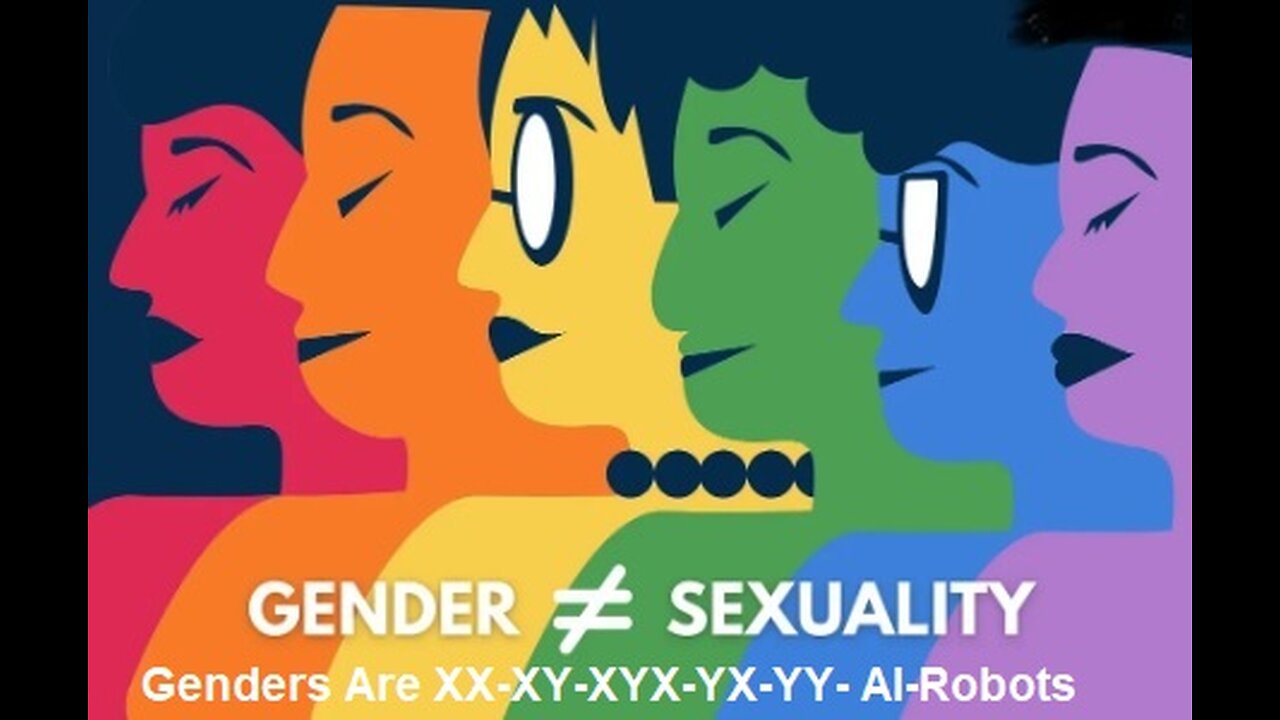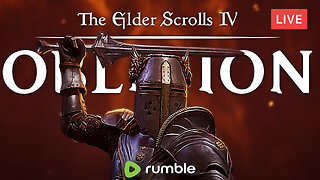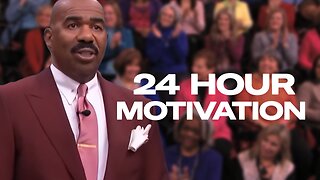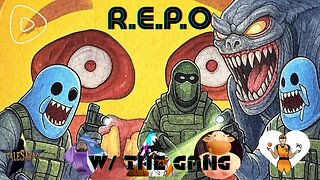Premium Only Content

How Many Genders Are There XX-XY-XYX-YX-YY And AI-Robots Inclusive Pronouns ?
So at LGBT Pride Weekend in West Hollywood to ask people some of the most debated questions that are relevant to the community. It got.. crazy. When I presented on issues facing LGBTQ college students at UVM’s Mental Health Matters conference this spring, I knew I had my work cut out for me. When the feedback was mixed, I wasn’t overly surprised.
My job as director of UVM’s LGBTQA Center requires me to know a lot about this topic, but bridging gaps between different levels of awareness that people bring to these topics is much more difficult than it used to be. I started providing education on how to be an ‘ally’ to LGB people before T and Q were in the vernacular. It was more than 25 years ago and terms like genderqueer, fluidity, and intersectionality hadn’t been invented yet.
The Complexities of Gender Identity
High school and college students today are reading, writing, talking, and living gender and sexuality in ways that go beyond concepts previously only hinted at by philosophers like Foucault and Butler, and scientists like Kinsey. Increasingly, these young people understand better than their elders that ‘identity’ is best understood through a lens of intersectionality. For example, if you are trying to understand someone’s gender, you need to also take into account their age, race, ethnicity, health status, religion, etc.
If this sounds impossibly hard, find a comfortable chair and plan to spend a good deal of time learning about what is becoming a new way to understand the complex diversity of human existence.
Gender is just one facet of this complexity, and gender itself is complex. Young people today are exploring their genders in ways that explode my generation’s understanding of gender as: binary (either man or woman), universal (people everywhere are the same) and fixed (stays the same throughout your lifetime). What is crucial to understand about this trend though is that large numbers of their peers fully support their explorations and that support makes this more than just a passing fashion.
A New Attitude on Gender Issues
Increasingly, the younger generation believes that many (if not all) previously established notions about humans and society should be open to question and critique. Ideas about science, government, war, economics, race, religion — that my generation took for granted — are being questioned not only by academics but by the public at large, especially the younger public. Young people are completely rejecting the premise that traditional notions of gender reflect human nature in some essential immutable way. Students I encounter are more than open to the idea of gender as a lived experience that can’t be bounded by the limitations of a universal, fixed, binary concept.
Some young people choose to educate themselves at length about how gender was reified by the scientific revolution and institutionalized by 19th century industrialization, but most simply find the idea of gender being more flexible and complex intuitively reasonable. But what they find intuitive, many older adults find confusing, and even frightening.
Some older adults actively resist change using whatever access they might have to personal or institutional resources, while increasing numbers of young people are moving on by tackling an array of projects: establishing nouns and pronouns to describe more genders; providing education about the differences between gender expression, gender identity, sex, and sexuality, and asserting the rights of themselves and others to choose whether and how to align their self-identified gender and their gender expression on any given day.
Breaking Tradition
People who assume all of this is a fad will ultimately find they were mistaken. These ideas are working their way into and through human societies all over the world. Readers for whom these ideas are new, might be confused when they realize that once the idea of fixed, binary gender is off the table, traditional notions of sexuality must be abandoned as well. If gender (mine and my life partner’s, e.g.) exist beyond a binary and are not fixed for our lifetimes, what language would we use to describe our relationship?
Like the lack of nouns and pronouns for gender, our language also lacks words for describing relationships beyond heterosexual (a relationship consisting of two different sexes) and homosexual (a relationship consisting of only one sex). And this last sentence highlights another point of confusion: sex and gender should not be confused to mean the same thing, but the two ideas are commonly assumed to always be aligned and therefore interchangeable.
What we are living today is nothing short of a social revolution that has come quietly into our towns, schools, and homes. The Internet has provided an unprecedented forum for people to communicate with each other across the miles and over time. Today, people exchange ideas that may have been confined throughout centuries to the isolated imagination of one person here or there. Blogs, discussion boards, and social media provide places where people share feelings of not fitting into accepted norms; feelings people in previous generations hid in shameful secrecy.
Before the Internet, people who are now being referred to as ‘gender non-conforming’ were worse off than the Whos of Whoville. At least the Whos had each other and when they combined their voices, they were heard and even the monkeys realized they existed. What if the Whos were isolated from each other, all on separate dust specks on separate flowers? Internet communication created a virtual Whoville where people who previously felt isolated by their differences to find each other, and then to join their voices, and ultimately to ‘prove’ their existence.
Gaining a Voice
Today, gender non-conforming people have a greater chance than ever to learn of the existence of other people like them and now that they have heard each other and we have heard them, their existence among us is unlocking gender constrictions that have bound humans in problematic assumptions, frictions, and fictions for centuries. I predict that similar social revolutions are coming soon, in the way humans see race, ethnicity, ability, and so many other categories of human experience.
It is true that it feels more challenging than ever to bridge the differences in understanding that exist between generations. Explaining even a portion of such complex ideas doesn’t fit neatly into the 50 minute power point presentation that have become the go-to tool of today’s professional development. But the Internet has given voice to a vast chorus of insight.
As we surf this wave of change together, we all need to stay open to new ideas and models for how we can best teach ourselves and each other about this revolution we are living.
69 Terms That Describe Gender Identity and Expression AI-Robots Inclusive Etc.
Gender and sex do not have the same meaning. One is social, and the other is biological. Gender is a spectrum, and there are many terms to describe it. Such language is important for understanding your gender and knowing how to affirm and support others. However, these terms can also be confusing. Read on to learn 68 terms about gender identity and expression and what they mean.
Gender vs. sex
Many people use the terms “gender” and “sex” interchangeably. However, gender and sex actually refer to two separate things.
Gender is an identity — your personal sense of who you are. The term can also refer to socially constructed categories that relate to what it means to be a man or a woman.
Sex refers to biological and physiological characteristics. Your genitals, hormones, and chromosomes all relate to your sex.
Although many are taught that there are only two sexes — male and female — that isn’t true. Some people are intersex or have a difference of sexual development (DSD). The categories used for sex and gender are socially constructed.
This doesn’t mean that sex and gender aren’t real, but that the way people conceptualize them isn’t set into the fabric of the universe — it can, and does, change.
What gender identity is
Your gender identity is your personal sense of self. It’s how you, as an individual, conceptualize your own gender.
Gender expression, on the other hand, is how you express your gender identity. Many do this through clothing, behavior, gesticulations — anything people might associate with gender. Your gender expression might match what society expects of your gender, or it might subvert it.
Gender presentation is often used interchangeably with “gender expression” in the sense that it’s how you present your gender (whether you intend to or not) externally.
Somebody might “present” as one gender when they actually identify with another. For example, a transgender woman might present as masculine, or a nonbinary person might present as feminine. The outside world might assume that they’re one gender, even when they’re not.
That’s why it’s important not to make assumptions about someone’s gender based on how they look.
Why it matters
There are so many gender terms out there, many of which overlap. Some also have definitions that shift over time or across different sources of information.
Thanks to the internet, we have more access to information, education, and visual representations of diverse genders — but comprehensive and inclusive resources about gender as a concept and this aspect of identity are still lacking.
Here, we attempt to bridge this gap by breaking down what many of these terms mean and how to use them.
Having language that helps demonstrate the many ways people experience, express, or identify their gender allows us all to more clearly see and understand the entire gender spectrum — including and beyond the traditional binary gender categories of man and woman.
AFAB
Acronym meaning “assigned female at birth.”
Agender
Someone who doesn’t identify with the idea or experience of having a gender.
AI Robots
Robots are designed in a world alive with gender norms, gender identities, and gender relations. A participants judged a robot programmed to perform security work as more masculine, while they judged the same robot instead programmed for guidance to be more feminine.
Aliagender
A nonbinary gender identity that doesn’t fit into existing gender schemas or constructs.
AMAB
Acronym meaning “assigned male at birth.”
Androgyne
Someone who has a gender presentation or identity that’s gender-neutral, androgynous, or has both masculine and feminine characteristics.
Aporagender
Both an umbrella term and nonbinary gender identity describing the experience of having a specific gender that’s different from man, woman, or any combination of the two.
Bigender
This term describes someone who identifies with two distinct genders.
Bigender indicates the number of gender identities someone has.
It doesn’t indicate which genders someone identifies with or the level of identification they have with a particular gender (such as 50 percent male, 50 percent demigirl).
Binarism
Generally, binarism refers to the gender systems and schemas that are based on the existence of two opposing parts, such as man/woman or masculine/feminine.
More specifically, binarism is a type of sexism that erases ethnic or culture-specific nonbinary gender roles and identities.
Body dysphoria
Body dysphoria is different from body dysmorphic disorder.
It refers to a specific type of gender dysphoria that manifests as distress or discomfort with aspects of the body.
This may include anatomy, shape, size, chromosomes, secondary sex characteristics, or internal reproductive structures.
Boi
A term, primarily used in LGBTQIA+ Communities of Color, that typically describes someone who has a presentation, sexuality, or gender that’s considered “boyish.”
Butch
Primarily used in LGBTQIA+ communities, this term typically describes someone with a presentation, sexuality, or gender that’s considered masculine.
Butch doesn’t necessarily indicate the other terms that someone might use to describe their presentation, sexuality, or gender.
Cisgender
A term used to describe people who exclusively identify with the sex and gender they were assigned at birth.
Cishet
A term that refers to someone who is both cisgender and heterosexual.
Cisnormativity
The assumption that a person identifies with the sex or gender they were assigned at birth, or that having a cisgender gender identity is the norm.
Cissexism
A form of oppression that discriminates against those who aren’t cisgender.
Demiboy
This nonbinary gender identity describes someone who partially identifies with being a boy, man, or masculine.
The term demiboy tells you about someone’s gender identity but doesn’t convey any information about the sex or gender assigned to someone at birth.
A demiboy can be cisgender or trans.
Demigender
This umbrella term typically includes nonbinary gender identities and uses the prefix “demi-” to indicate the experience of having a partial identification or connection to a particular gender.
This may include:
demigirl - demiboy - demienby - demitrans
- Demigirl
This nonbinary gender identity describes someone who partially identifies with being a girl, woman, womxn, or feminine.
The term demigirl tells you about someone’s gender identity but doesn’t convey any information about the sex or gender assigned to someone at birth.
A demigirl can be cisgender or trans.
Dyadic
This describes people who have sex characteristics — such as chromosomes, hormones, internal organs, or anatomy — that can be easily categorized into the binary sex framework of male or female.
Dyadic conveys information about someone’s sex characteristics but doesn’t indicate anything about their gender.
Feminine-of-center
This describes people who experience their gender as feminine or femme.
Some feminine-of-center people also identify with the word “woman,” but others don’t.
The term feminine-of-center tells you about someone’s gender identity but doesn’t convey any information about the sex or gender assigned to them at birth.
Feminine-presenting
This describes people who have a gender expression or presentation that they or others categorize as feminine.
Feminine-presenting is a term that captures the part of someone’s gender that’s shown externally, either through aspects of their style, appearance, physical traits, mannerisms, or body language.
This term doesn’t necessarily indicate anything about the way someone identifies their gender or the gender or sex assigned to them at birth.
Femme
This is a label for a gender identity or expression that describes someone with a gender that is or leans toward feminine.
Some femmes also identify with the term “woman,” while many others don’t.
Femme indicates the way someone experiences or expresses their gender and doesn’t provide any information about the gender or sex assigned to them at birth.
Female-to-male (FTM)
This term is most commonly used to refer to trans males, trans men, and some transmasculine people who were assigned female at birth.
It’s important to only use this term if someone wants to be referred to this way, as some trans men and transmasculine people use terms that don’t include or indicate the sex they were assigned at birth.
Gender apathetic
This term describes someone who doesn’t strongly identify with any gender or with any gender labels.
Some gender apathetic people also use terms that indicate their relationship with the sex or gender assigned to them at birth — such as cis apathetic or trans apathetic — while others don’t.
Generally, people who are gender apathetic display an attitude of flexibility, openness, and “not caring” about how gender identity or presentation is perceived and labeled by others.
Gender binary
Also known as gender binarism, this term refers to gender classification systems — whether cultural, legal, structural, or social — that organize gender or sex into two mutually exclusive categories such man/woman or masculine/feminine.
Gender Chromosomes
Gender Chromosomes identity refers to how gender is expressed in the context of how norms function in our culture. There Are XX-XY-XYX-YX-YY-AI-Robots
Gender dysphoria
This is both a medical diagnosis and an informal term used to communicate challenging feelings or distress people experience in relation to gender.
The medical diagnosis of gender dysphoria refers to a conflict between someone’s assigned sex (as male, female, or intersex) and their gender identity.
When used informally, gender dysphoria describes interactions, assumptions, physical traits, or body parts that don’t feel affirming or inclusive of someone’s expressed or experienced gender.
Gender expansive
An umbrella term that’s used to refer to people who subvert or don’t conform to society’s dominant view of gender.
This could include trans people, nonbinary people, people who are gender nonconforming, and more.
Gender expression
Gender expression is the way someone expresses gender through behavior, mannerisms, interests, physical characteristics, or appearance.
It’s often but not always described using terms such as masculine, feminine, neutral, androgynous, conforming, or nonconforming.
The words used to describe someone’s gender expression are dependent upon social or cultural norms and stereotypes and may change over time.
Gender identity
This is the way someone experiences gender internally as part of their core sense of self.
Gender identity can’t be assumed based on appearance, anatomy, social norms, or stereotypes.
Gender identity isn’t determined by assigned gender or sex, and often develops or changes over time.
Gender-neutral pronouns
These pronouns aren’t stereotypically or culturally categorized as masculine or feminine or for men or women.
Gender-neutral pronouns are used by both cisgender and transgender individuals as a way to affirm and convey important information about who they are and how they want to be referred to.
Examples include:
they/them/theirs
ze/hir/hirs
ze/zir/zirs
xe/xem/xyrs
Gender nonconforming
This term is used to describe people with a gender expression or presentation that’s different from cultural or social stereotypes associated with the person’s perceived or assigned gender or sex.
Gender nonconforming isn’t a gender identity, though some people do self-identify using this term.
It doesn’t convey any information about the way someone experiences gender internally.
More accurately, gender nonconforming is a term used to describe physical traits in relation to socially and culturally defined gender categories.
People of any gender — cis, trans, or nonbinary — can be gender nonconforming.
Gender normative
A term used to describe gender traits or identities that are perceived to fall within social norms and expectations.
Gender presentation
Similar to gender expression, gender presentation refers to the way someone uses behavior, mannerisms, interests, physical characteristics, or appearance to convey or present a particular gender externally.
Gender questioning
A person who’s questioning one or multiple aspects of their gender, such as their gender identity or expression.
Gender roles
The interests, behaviors, and mannerisms that a society or culture assigns to a particular gender or to the things expected of a person based on their assigned, perceived, or actual gender.
Gender roles change over time and across cultures.
Gender variant
Similar to gender nonconforming, gender variant is an umbrella term used to describe people with a gender identity, expression, or presentation that’s different from the perceived social norm or dominant group.
Some people dislike this term because of its potential to perpetuate misinformation and negative stigma about noncisgender gender identities and nonconforming presentation being less “normal” or naturally occurring.
Genderfluid
This label is used to describe gender identity or expression.
It involves the experience of moving between genders or having a gender that changes over a particular period of time. For example, from moment to moment, day to day, month to month, year to year, or decade to decade.
Genderfuck
Similar to the term “gender bender,” this term involves the act of combating or dismantling the gender binary and stereotypes through a gender identity, expression, or presentation that challenges existing norms and expectations in a given cultural context.
Genderqueer
This nonbinary gender identity and term describes someone with a gender that can’t be categorized as exclusively man or woman, or exclusively masculine or feminine.
People who are genderqueer experience and express gender in different ways. This can include neither, both, or a combination of man, woman, or nonbinary genders.
Gendervoid
A term that describes someone without a gender identity. Although it’s similar to agender, gendervoid is usually associated with a feeling of loss or lack.
God-Gender Identity Created by God ?
We all create gender roles to relate to society. Nevertheless, Jesus made clear that the essence of maleness and femaleness was created by God. Jesus said, “Have you not read, that he who made them in the beginning made them male and female” (Matthew 19:4)
Graygender
A gender term that describes someone who experiences ambivalence about gender identity or expression, and doesn’t fully identify with a binary gender that’s exclusively man or woman.
Hermaphrodite
Hermaphroditism is the condition of having both male and female reproductive organs. The term hermaphrodite was once commonly used in medical and informal contexts to refer to people but this use is no longer accepted.
Intergender
A nonbinary gender identity that describes the experience of having a gender that falls somewhere in between woman and man or is a mix of both man and woman.
Intersex
An umbrella term that describes people who have sex characteristics — such as chromosomes, internal organs, hormones, or anatomy — that can’t be easily categorized into the binary sex framework of male or female.
Intersex conveys information about a person’s sex characteristics but doesn’t indicate anything about their gender identity.
Masculine-of-center
This term describes people who experience their gender as masculine or masc.
Some masculine-of-center people also identify with the word “man,” but many others don’t.
The term masculine-of-center tells you about someone’s gender identity but doesn’t convey any information about the sex or gender assigned to them at birth.
Masculine-presenting
This term describes people who have a gender expression or presentation that they or others categorize as masculine.
Masculine-presenting captures the part of someone’s gender that’s shown externally, either through aspects of their style, appearance, physical traits, mannerisms, or body language.
This term doesn’t necessarily indicate anything about the way someone identifies their gender or the gender or sex assigned to them.
Maverique
This nonbinary gender identity emphasizes the inner experience of gender.
It describes those who experience gender or have a core gender identity that’s independent of existing categories and definitions of gender, man or woman, masculine or feminine, and androgynous or neutral.
Misgender
The act of referring to someone using a gender pronoun or gendered language that’s incorrect, inaccurate, or not inclusive of the person’s actual gender identity.
Male-to-female (MTF)
This term is most commonly used to refer to trans women and some transfeminine people who were assigned male at birth.
It’s important to only use this term if someone prefers to be referred to this way, as some trans women and some transfeminine people prefer to use terms that don’t include or overtly indicate the sex they were assigned at birth.
Multi-gender
This umbrella term is used to describe people who experience more than one gender identity.
Other gender labels that fall under the multi-gender umbrella include:
bigender - trigender - pangender - polygender
In some cases, gender fluid may also fall under this umbrella.
Neutrois
This nonbinary identity and umbrella term is used to describe people who have a gender that isn’t exclusively man or woman.
Neutrois can be a broader term encompassing other gender identities, such as nonbinary, agender, genderfluid, or genderless.
Nonbinary
Also referred to as “enby,” this is a gender identity and umbrella term for gender identities that can’t be exclusively categorized as man or woman.
Individuals who are nonbinary can experience gender a variety of ways, including a combination of man and woman, neither man nor woman, or something else altogether.
Some nonbinary individuals are trans, while many others don’t.
Whether a nonbinary person is also trans typically depends on the extent to which that person identifies, even partially, with the sex and gender assigned to them at birth.
Novigender
People who use this gender identity experience having a gender that can’t be described using existing language due to its complex and unique nature.
Omnigender
A nonbinary gender identity that describes people who experience all or many gender identities on the gender spectrum simultaneously or over time. Similar to pangender.
Pangender
A nonbinary gender identity that describes people who experience all or many gender identities on the gender spectrum simultaneously or over time. Similar to omnigender.
Polygender
This gender identity term describes the experience of having multiple gender identities simultaneously or over time.
This term indicates the number of gender identities someone experiences but doesn’t necessarily indicate which genders are included in the given person’s polygender identity.
Sex
The classification of a person as male, female, or intersex based on the existing system of organizing human bodies and biologies.
This system is based on chromosomes, hormones, internal and external reproductive organs, and secondary sex characteristics.
Sex assigned at birth
This refers to the act of assigning or designating a particular sex to a person based on their chromosomes, hormones, internal and external reproductive organs, and secondary sex characteristics.
This is often done by medical professionals during pregnancy or immediately after childbirth.
The sex a person is assigned at birth doesn’t determine or indicate anything about their authentic gender experience or identity.
Social dysphoria
A specific type of gender dysphoria that manifests as distress and discomfort that results from the way society or other people perceive, label, refer to, or interact with someone’s gender or body.
Soft butch
Both a gender identity and term used to describe the nonconforming gender expression of someone who has some masculine or butch traits, but doesn’t fully fit the stereotypes associated with masculine or butch cisgender lesbians.
Stone butch
Both a gender identity and term used to describe the nonconforming gender expression of someone who embodies traits associated with feminine butchness or stereotypes associated with traditional masculinity.
Third gender
Originating in non-Western and Indigenous cultures, third gender is a gender category that includes people who have a gender that can’t be exclusively categorized as man or woman, or is different from man or woman.
Transfeminine
A gender identity label that conveys the experience of having a feminine gender identity that’s different from the gender or sex that was assigned at birth.
Transgender or trans
Both an umbrella term including many gender identities and a specific gender identity that describes those with a gender identity that’s different from the gender or sex assigned at birth.
Transmasculine
A gender identity label that conveys the experience of having a masculine gender identity that’s different than the gender or sex that was assigned at birth.
Transitioning
The act of making physical, social, medical, surgical, interpersonal, or personal changes that help to affirm gender or address gender dysphoria.
Transsexual
Falling under the transgender umbrella, transsexual is a word that was medically and historically used to indicate a difference between one’s gender identity (i.e., the internal experience of gender) and sex assigned at birth (as male, female, or intersex).
Transsexual is often (though not always) used to communicate that one’s experience of gender involves a medical diagnosis or medical changes — such as hormones or surgery — that help alter anatomy and appearance to feel more congruent with gender identity.
Due to a fraught history, the word transsexual can be contentious and shouldn’t be used unless someone specifically asks to be referred to this way.
Trigender
This gender identity describes the experience of having three gender identities, simultaneously or over time.
This term indicates the number of gender identities someone experiences but doesn’t necessarily indicate which genders are included in a given person’s trigender identity.
Two-spirit
This umbrella term was created by Native American communities to bring traditional Indigenous understandings of gender and sexuality into Western and contemporary native education and literature.
Each First Nation tribe has its own understanding and meaning of what it means to be two-spirit, so this term can have many definitions.
Two-spirit generally refers to a gender role believed to be a common, acknowledged, accepted, and praised gender classification among most First Nation communities, dating back centuries.
The bottom line
It’s amazing that gender — something many people thought was a simple concept — is actually so personal, nuanced, and complex. For that reason, it’s totally OK if this list is a lot to digest!
Just remember: Gender is an essential part of health and well-being for everyone.
Becoming familiar with language that helps you to talk about this part of identity and society is a great way to care for yourself and be an ally to others.
Are Gender & Sexuality the same thing ? Often questions like, "Are Gender and Sexuality the same thing?", " What is the difference between Sex and Sexuality?", put us at crossroads. And then, we come up with a lot of questions about Gender, Sexuality, etc.
Moreover, important terms like Gender and Sexuality, Gender Inclusivity keep evolving. And, if proper awareness and education aren't available about such normally important things, confusions are likely to occur!
But, wait!
No more confusion from now, because this article will provide you with all the information that will help you to be aware as well as more respectful.
There are 7.9 billion+ people on earth, with different Gender and Sexuality. Don't forget that you and I are also among them.
We are all individuals who function with our unique mechanisms.
The silver lining is, "We are all unique and different, and this difference makes the world more beautiful."
So keep reading and make yourself more aware of our beautifully diverse society.
What is the difference between sex and sexuality?
“Sex” is the term we use to refer to a person’s sexual anatomy(someone's sexual body parts). Sex is about the sex chromosomes that decide individual's Sex, for example, a person can be male, female, or intersex.
Whereas, Sexuality stands for an individual's sexual (romantic) feelings for another individual for example the person can be bisexual, pansexual, lesbian, etc.
So next time, use these words correctly!
Who is intersex?
Intersex is an umbrella term for various conditions in which a person is born with sexual anatomy that doesn’t fit the definitions of female or male. For example, a person might be born appearing to be female externally, but having mostly male-typical genetics on the inside.
Are Gender and Sexuality the same thing?
Well, Gender a.k.a Gender Identity is an individual's internal identity which may not be given to them at birth, for example, trans women were assigned male sex at birth but are a woman. Their Gender Identity is female.
(Please note, a person can have more than one Gender Identity, they are known as Pangender.)
On the other hand, sexuality or sexual orientation, as mentioned earlier, is concerned with your sexual feelings, thoughts, attractions, and your behavior towards others. Now, for example, if a person experiences little or no sexual attraction or maybe doesn't feel the need to act out that attraction sexually, the person is classified as Asexual.
So, next time be aware while answering "Are Gender and Sexuality the same thing?".
Gender Identity
What is it called when you don't care about your gender?
Generally, such people are called Gender Non-Conforming. It refers to people who do not follow other people’s ideas or stereotypes about how they should look or act because of the female or male sex they were assigned at birth.
How many genders are there?
There are more than two genders, even though in our society the genders that are most recognised are male and female (called the Gender Binary) and usually are based on someone’s anatomy (the genitals they were born with).
However, there are more than 60 gender identities in our society, for example
Agender: Someone who doesn’t identify with the idea or experience of having a gender.
Demi gender: This umbrella term typically includes nonbinary gender identities and uses the prefix “Demi-” to indicate the experience of having a partial identification or connection to a particular gender.
There are various other gender identities and we should be respect them just like males and females.
What does transgender mean?
Transgender is an umbrella term, meaning someone whose Gender Identity differs from what was at birth. There are a lot of different terms transgender people use to describe themselves, for example:
Trans binary persons(Trans men, Trans Women), Non-binary persons like Agenders, Pangender, Genderqueer, Gender fluid, Demigenders, etc.
Who was the first transgender?
Christine Jorgenson
George Jorgensen, a quiet New Yorker, shocked a nation by returning from a trip to Denmark transformed into the glamorous Christine. In her autobiography, Jorgensen says that, while she was still living as George, despite being attracted to men she felt physically sick when a man seduced her.
What is the difference between Gender Binary & Non-Binary?
“Non-binary” is one term people use to describe Genders that don’t fall into one of these two categories, male or female, whereas "binary" is a term describing male or female as binary literally means two.
Trans women: they are the women who were AMAB (assigned male at birth)
Trans men: they are men who were AFAB(assigned female at birth).
Who is a Genderqueer? How is it different from being Genderfluid?
Genderqueer is an umbrella term to describe someone whose Gender Identity doesn’t fit within socially constructed norms, whether that’s in terms of their thoughts, feelings, behaviors, or presentation, They are Individuals who identify as neither male nor female (but as another gender), as somewhere in between or beyond Genders, or as a combination of genders.
On the other hand, those who are Genderfluid have a Gender that is not fixed, and their Gender Identity may shift over long or short periods. Some people might identify strongly with a particular gender one day, and another gender the next. It all depends on how they’re feeling at the moment.
What is the difference between Pangender and Pansexual?
Pangender is a Non-Binary Gender Identity, referring to people who experience all gender identities, either simultaneously or over time.
On the other hand, Pansexual is a Sexual Orientation that means someone who issexually attracted to people of any or all genders.
Well don't confuse yourself between Gender and Sexuality, let's know more about sexuality or sexual orientation.
Sexuality
What is the meaning of Straight or Heterosexual?
People who are Heterosexual, are romantically and physically attracted to members of the opposite sex: Heterosexual males are attracted to females, and heterosexual females are attracted to males. Heterosexuals are sometimes called "straight."
Who are Homosexuals?
Homosexuality refers to the attraction between people who are of the same sex. It comes from the Greek word homos, meaning “the same”, for example, men who are attracted by other men are known as Gay, while a woman who is attracted to another woman is known as a lesbian.
Know more about the lgbtqia+ community.
Lesbian - Gay - Bisexual - Transgender - Queer or Questioning - Intersex
- Asexual +
Over the past decade, LGBT people have gained more and more tolerance and acceptance in India, especially in large cities. However, their coming out is still not easy because of the fear of discrimination, marginalization accompanied by bullying. A report by UNESDOC Digital library boldly illustrates the plight of the LGBTQ+ community in the schools of Tamil Nadu.
What challenges lgbtq+ community goes through?
In the present times, there might be an increased awareness and acceptance regarding the LGBTQ community and their rights among the Indian youth in urban areas. However, India’s rural population accounts for 833.1 million people, which is a huge number.
Most of the time, families of rural India prove to be extremely brutal towards the LGBTQ+ Community. Some of these cruelties are Honor Killing, Rapes, etc. It leaves the LGBTQ+ individual with no option other than running away or hiding their true identity.
Discrimination in day-to-day lives, in workspaces, makes it difficult for LGBTQ+ individuals to live their lives with the dignity they deserve for being humans. The discrimination affects their ability to fully enjoy their civil, cultural, economic, political, and social rights and also deprives them mentally.
LGBTQ+ individuals are at great risk for poor mental health across developmental stages. Various research evidence has shown high rates of major depression, anxiety, mental abuse, and suicides.
Due to loneliness LGBTQ+ people become drug addicts and turn toward alcohol, tobacco, and other drugs.
Lack of communication and misunderstandings, low awareness in the society about the LGBTQ+ community turns out to be harsh and demotivating for LGBTQ individuals. It creates a feeling of alienation in the LGBTQ community.
LGBT rights; Indian Government's stance on Gender and Sexuality
Article 14 and 15 of our Indian Constitution, prohibits discrimination on grounds of religion, race, caste, sex, or place of birth.
Under article 20, the Indian constitution safeguards the right to life and personal liberty of every individual. Therefore an individual's privacy and right to live with dignity should not be put at risk in any situation.
In April 2014, the Supreme Court of India ruled in NALSA vs Union of India that the rights and freedoms of transgender people in India were protected under the Constitution.
In September 2018, the Supreme Court also decriminalized adult consensual same-sex relationships in the Section 377 judgment review. These judgments are a landmark in their expansive reading of constitutional rights and in empowering LGBT persons.
Pride Month
“I was not ladylike, nor I was manly, I was something else altogether. There were so many different ways to be beautiful.”- Michael Cunningham
We celebrate Pride Month each year in June. It encourages self-affirmation, dignity, equality, and increased visibility of lesbian, gay, bisexual, transgenders as a social group. It's about people coming together in love and friendship.
Why is June Pride Month?
The LGBTQ+ Pride Month lies in June, concerning the 1969 Stonewall Uprising in Manhattan.
On 28th June 1969, police raided the Stonewall Inn, a popular gay club in New York City. During this time, people of “different” Gender and sexuality (especially drag queens) socialize in such gay bars to prevent public embarrassment.
However, the police raid gave rise to the voices against the injustice, the Stonewall Riots, a.k.a the Stonewall Uprising. The movement gained momentum because of brave souls like Marsha P. Johnson, an American gay liberation activist, and a self-identified drag queen.
Who is a Drag Queen?
In simple words, a person(usually males) wears exaggerated female attire and entertains masses through small skits or other stage performances. RuPaul, born in 1960 is one of the most popular drag queens in the world. However, the Drag Culture isn’t something new to India. Earlier, when women did not perform on stage, men dress like women and play the female part. Moreover, the Drag Culture has been there in numerous Bollywood movies, for example, Half Ticket(1962) where legendary actor Kishore Kumar dressed as a gypsy woman.
The New Pride Flag! Celebrate different Gender and Sexuality with The Progress Flag
In 1978, Gilbert Baker, an American gay rights activist, designed the rainbow flag as a symbol of LGBTQ Pride. However, over time as the LGBTQ community grew, a strong need of strengthening all the identities came up. Therefore, to maintain the sanctity of inclusiveness and progression, the LGBTQIA+ identifies The Progress Flag as their new symbol of Pride.
The Progress Flag featuring the new addition of brown, black, pink, baby blue, and white stripes has been officially accepted as the New Pride Flag. Different colors in the Pride Flag represent different symbolic meanings. Let’s have a look:
Red represents life, it also represents a sense of passion in your veins.
Orange signifies healing, it vindicates light-heartedness, fun, and celebrations.
Yellow obviously stands for sunlight, bright ideas, and thoughts.
Green is for Nature, symbolizing perpetual growth and prosperity.
Blue is a color radiating calm and serene vibes.
The color Black and brown tells us about respecting our racial diversity among people.
#blacklivesmatter was a popular movement in this regard.
Baby Blue and Pink are for the boys and girls who are transitioning, respectively.
White color represents the intersex or those who identify outside the gender binary.
The New Pride was designed by Daniel Quasar in 2018. The Progress Flag incorporates intersex people into the LGBTQ+ movement. It was led by Valentino Vecchietti.
Who is an ally?
An Ally works to end oppression by extending support and advocating for people who are and treated unfairly. For the LGBT community, an ally is someone who stands up for their rights and treats them as equals.
How can I get society to be more open-minded about LGBTQ people?
There are various ways in which you can extend a hand for a more inclusive world, for example-
Firstly, be respectful and accepting, and then start by educating as many people as possible.
Be a good listener, and be open to conversations and new concepts.
Don’t assume other's gender and sexuality by their external looks.
Use gender-neutral or gender preferred pronouns to refer to people.
Oppose prejudices, stereotypes, with strong and valid arguments to convince the other individual to be more accepting. Fight back against any sort of discrimination on the lgbtq+ community. You can also use social media to raise your voice.
-
 8:10:27
8:10:27
What If Everything You Were Taught Was A Lie?
22 days agoA Guide To The Flat Earth Conspiracy Over 8+ Hour Open Your Mind Is The Earth Actually Flat ?
4.26K1 -
 LIVE
LIVE
a12cat34dog
5 hours agoONE WITH THE DARK & SHADOWS :: The Elder Scrolls IV: Oblivion Remastered :: FIRST-TIME PLAYING {18+}
206 watching -
 22:27
22:27
Exploring With Nug
12 hours ago $9.26 earnedSwamp Yields a Chilling Discovery in 40-Year Search for Missing Man!
24.5K16 -
 1:23:26
1:23:26
RiftTV/Slightly Offensive
7 hours ago $8.48 earnedThe LUCRATIVE Side of Programming and the SECRETS of the "Tech Right" | Guest: Hunter Isaacson
39.3K16 -
 27:57
27:57
MYLUNCHBREAK CHANNEL PAGE
1 day agoDams Destroyed India
50.7K19 -
 LIVE
LIVE
Phyxicx
8 hours agoLast minute practice before Sunday - 4/26/2025
249 watching -
 LIVE
LIVE
The Official Steve Harvey
10 days ago $4.35 earned24 HOURS OF MOTIVATION w/ STEVE HARVEY
59 watching -
![Nintendo Switch It UP Saturdays with The Fellas: LIVE - Episode #16 [Clue]](https://1a-1791.com/video/fww1/eb/s8/1/L/3/n/F/L3nFy.0kob-small-Nintendo-Switch-It-UP-Satur.jpg) LIVE
LIVE
MoFio23!
13 hours agoNintendo Switch It UP Saturdays with The Fellas: LIVE - Episode #16 [Clue]
137 watching -
 LIVE
LIVE
StaleSavage
4 hours agoREPO GANGGANG
49 watching -
 39:29
39:29
Stephen Gardner
7 hours ago🔥Pam Bondi drops NIGHTMARE NEWS on 3 top DEMOCRATS!
65.6K126